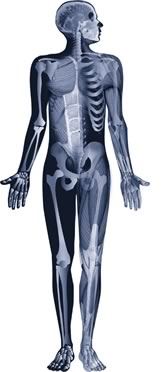Osteopathy is a hands-on therapy that treats pain arising from the musculo-skeletal system i.e. muscles, joints, tendons and discs ligaments. This makes osteopaths highly effective at treating back pain, neck pain and pain related to the arm or leg (sciatica). But we are called Not Just Backs for a reason, and so we are more than happy to treat shoulder strains, headaches and knee disorders too.
In order to become registered, osteopaths must undergo a 4 - 5 year degree course, which teaches core medical sciences (anatomy, pathology, neurology etc.). Along with a highly refined palpatory awareness and sense of touch with the body’s biomechanics, your osteopath will be able to diagnose what is causing your pain. Whether it is a disc injury, hip problem or shoulder impingement.
Osteopaths observe the body as a whole and tend to not just treat the affected area, and so are used to seeing people with pain in a wide variety of areas. Sometimes treatment may be focussed away from the problematic area as the real issue may be originating from somewhere else.
Osteopathy can be separated into two types of treatment: structural and cranial osteopathy. At Not Just Backs we use both, sometimes in isolation but most the time as a combination. Everyone is individual and so everyone responds to these treatments in different ways. Our goal is to not only find out why you have sustained an injury, but also try and reduce any future problems.
Structural osteopathy
This is the more physical of the two modalities. Your osteopath will use a variety of techniques to improve the function of your joints, including soft tissue massage, articulation and specific manipulation (you may hear a click or pop from your joint – don’t panic!). All of these combined techniques are applied with consideration to your body and will feel soothing to the painful area.
Cranial osteopathy
This is a very gentle hands-on treatment. Your osteopath will use different contacts on the body, primarily the head and lower back or sacrum and will be monitoring three main areas when working with this approach. These are: bone, cerebro-spinal fluid (CSF) movement, and fascial tension. This approach works at a deeper level than the structural approach despite being gentler and is particularly useful for people who have had previous injuries, with osteoporosis, children and babies and those who suffer with chronic pain.



